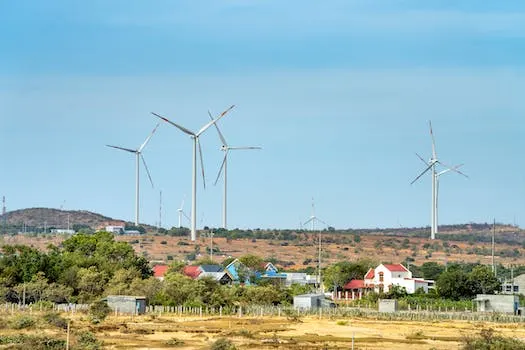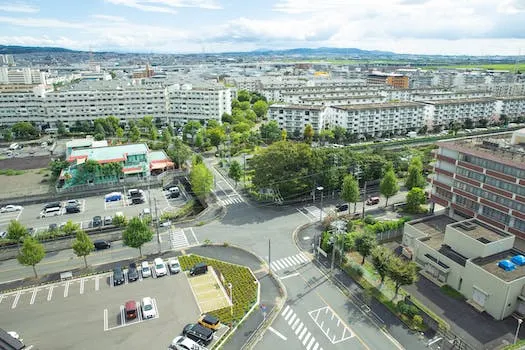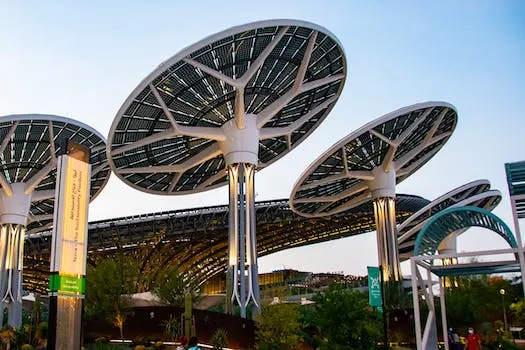
Building Sustainable Solutions for Ecological Resilience
The concept of ecological resilience is essential for maintaining a balance between the natural and built environment. To achieve this goal, it is important to develop sustainable solutions that focus on the long-term sustainability of natural resources. This article will explore various strategies and technologies available for building sustainable solutions for ecological resilience.
Resilience is about cultivating the capacity to sustain development in the face of expected and surprising change, as well as diverse pathways of development. Sustainable use of natural resources strives to maintain a balance between these dimensions: ensuring long-term use while also protecting our planet's resources. This means doing more than just getting economies and livelihoods quickly back on their feet; recovery policies must also trigger investment in resilient infrastructure, social protection systems, and other measures that can help communities adapt to changing conditions over time.
In order to build sustainable solutions for ecological resilience, we must consider social-ecological indicators and assessment of coastal urban areas which evolve differently from one another but often have overlapping consequences that can be long lived and are not completely reversible. The 17 sustainable development goals (SDGs) with 169 targets provide us with an opportunity to create lasting protection for our planet's natural resources by focusing on economic growth, social inclusion, environmental protection, peacebuilding efforts, climate action initiatives among others.
This article will discuss how we can build sustainable solutions for ecological resilience by exploring various strategies such as SDGs implementation along with technologies available today that focus on achieving this goal in a balanced manner while protecting our planet's precious resources at the same time.
What is Ecological Resilience?
ecological resilience is a concept that has been gaining traction in recent years, as it is seen as an important factor in maintaining the health and productivity of ecosystems. It refers to the ability of an ecosystem to absorb disturbances and remain healthy and productive. This involves the maintenance of biodiversity, the ability to withstand extreme events, and the ability to recover from disturbances. Ecological resilience is important because it helps protect natural environments from human-caused disturbances while also allowing them to recover from natural disasters or other disruptions.
The term 'ecological resilience' can be defined as a system's capacity to undergo disturbance and reorganize so as to still maintain its essential functions. This adaptability allows for ecosystems to continually change and adapt while remaining within critical thresholds. Resilience theory states that ecological resilience is measured by how much disturbance an ecosystem can take before altering its self-organized processes or structures. In other words, it measures how well an ecosystem can resist damage caused by external forces such as human activity or natural disasters, while also being able to quickly recover afterwards.
Biodiversity plays a key role in ecological resilience since different species are able to respond differently when faced with disruption or change in their environment. For example, some species may be more resistant than others when faced with extreme weather conditions like floods or droughts; this diversity helps ensure that at least some species will survive even if their environment changes drastically due to external forces like climate change or human activity. Additionally, biodiversity also helps promote recovery after a disturbance since different species have different roles within an ecosystem which help restore balance after disruption occurs.
Overall, ecological resilience is essential for maintaining healthy ecosystems which are vital for sustaining life on Earth; without it our planet would be unable cope with environmental changes caused by both humans and nature alike leading potentially catastrophic consequences for all living things on Earth.
Strategies for Building Sustainable Solutions
Conservation of natural resources is essential for building sustainable solutions for ecological resilience. This involves protecting natural resources from exploitation and degradation through the use of laws and regulations, the establishment of protected areas, and the implementation of Sustainable Development initiatives. Sustainable land use is also important in this regard, as it involves managing land use in a way that maintains the health of the environment. This can be done through zoning regulations, land use plans, and other land use management strategies. Additionally, innovative technologies can be used to reduce environmental impact by utilizing renewable energy sources, green building materials, and efficient water management systems. Finally, community engagement is key to developing sustainable solutions; this can be achieved through public education campaigns, citizen science initiatives, and involving community members in decision-making processes.
The UNECE supports these efforts by addressing transboundary issues such as social justice concerns related to natural resource exploitation; environmental health risks posed by climate change; economic development opportunities associated with renewable energy sources; accessibility-related policies that promote equitable access to resources; and guidelines for Protected areas with sustainable use of natural resources. All these strategies are necessary components for creating resilient ecosystems that will benefit both humans and nature alike.
In order to build effective solutions for ecological resilience it is important to consider all three dimensions of sustainability: social justice concerns related to resource exploitation; environmental health risks posed by climate change; economic development opportunities associated with renewable energy sources; accessibility-related policies that promote equitable access to resources; guidelines for protected areas with sustainable use of natural resources - all these must be taken into account when designing recovery policies which cover several dimensions at once such as catalysing shifts towards accessibility-related policies or promoting renewable energy sources instead of fossil fuels which are accelerating climate change while degrading ecosystems at an alarming rate.
Ultimately it is up to individuals within communities around the world who have a vested interest in preserving their environment while ensuring their own survival chances are not threatened by environmental degradation or lack thereof access due large scale resource extraction activities taking place without proper consideration given towards local populations’ needs or rights over those same resources they depend on daily basis - only then we will see real progress being made towards building truly resilient ecosystems capable sustaining life on Earth long into future generations’ time!
The Benefits of Sustainable Solutions
The development of sustainable solutions for ecological resilience has a number of benefits that are essential to protecting our environment and preserving it for future generations. These include the protection of natural resources from exploitation and degradation, improved water quality by reducing pollution and runoff, reduced carbon emissions through the promotion of renewable energy sources, efficient water management systems, and green building materials, as well as increased biodiversity by protecting habitats and preserving species from extinction.
In addition to these environmental benefits, sustainable solutions also bring important social advantages. Inclusive and community-led governance structures and decision-making processes help protect vulnerable populations from exploitation while providing them with access to resources they need for their survival. This is especially true in developing countries where people's lives are threatened by environmental degradation caused by large-scale resource extraction activities.
Building a more sustainable global economy is key to reducing greenhouse gas emissions that cause climate change. It is therefore critically important that we take steps towards creating resilient ecosystems so that nature can continue providing essential services without putting growing pressure on individuals or society at large. To do this we must address humanity's addiction to fossil fuels and voracious appetite for natural resources which are accelerating climate change while degrading ecosystems at an alarming rate. Unless addressed soon these problems will substantially diminish the benefits future generations obtain from ecosystems leading to further environmental degradation as well as social injustice around the world.
Conclusion
In conclusion, sustainable solutions for ecological resilience are essential for maintaining a balance between the natural and built environment. By implementing strategies and technologies that promote net-zero GHG emissions, we can ensure the long-term sustainability of natural resources and promote a healthier and more resilient environment. Nature-based solutions (NbS) provide a number of benefits, including the protection of natural resources, improved water quality, reduced carbon emissions, and increased biodiversity. This approach is at the heart of transitioning to more inclusive societies with much reduced impacts on our planet's climate. COP27 has announced new actions and recommendations that will make NbS a go-to option for fighting climate change in order to build a more sustainable global economy. Ultimately, this will help reduce greenhouse gas emissions that cause climate change while also protecting our planet's environmental functions from anthropogenic damage.










